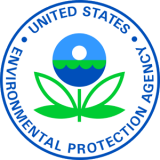EPA Approves Kansas’ and Iowa’s Lists of Impaired Waters

LENEXA, KAN. (MAY 3, 2022) - EPA has approved Kansas’ and Iowa’s 2022 lists of impaired waters. A water body is placed on an impaired waters list when monitoring finds that pollutant levels prevent the lake, river or stream from attaining its designated uses. Designated uses include human recreation, fish consumption, and maintaining healthy aquatic life.
"Kansas’ and Iowa’s 2022 lists will help them set priorities to improve water quality in the coming years,” said EPA Region 7 Water Division Director Jeff Robichaud. “The Clean Water Act was passed almost 50 years ago, and while we have made progress in the time since, much work remains to bring all waters into attainment with water quality standards and further reduce the amount of pollution reaching our waters.”
One of the most important aspects of the Clean Water Act is the requirement to submit a report characterizing a state’s surface water quality and a list of every impaired water body. Every two years, each state must provide the opportunity to engage the public through a public notice and comment process. When the public participation requirements are fulfilled, a state will then submit this report and list of impaired waters to EPA.
This year marks the 50th anniversary of the Clean Water Act, which was established in 1972 to restore and maintain the chemical, physical and biological integrity of the nation’s waters. The Act and its related regulations that have been established over the last five decades created a series of programs that protect local waterways through, among other things, prohibition of the discharge of pollutants into waters without regulated permits; the establishment of water quality criteria to protect designated uses; and the development of programs to control nonpoint source pollution.
Local waters have benefited from treatment plants being constructed to reduce toxic pollutants discharged from industries and privately owned treatment works; water monitoring and sampling that has allowed states to share information on the quality of waters and create plans to improve them; and the establishment of best management practices to keep stormwater from overwhelming sewers and allowing untreated sewage to reach streams and rivers.
This month, EPA also released a Memo, Accelerating Nutrient Pollution Reductions in the Nation’s Waters, which strongly encourages states to rely on numeric nutrient targets for Clean Water Act Section 303(d) lists (impaired waters) to ensure the protection and restoration of the states’ waters. Over 26,000 water bodies with nutrient-related impairments are still on state lists of impaired waters that do not yet have a total maximum daily load (TMDL).
Once a water body is included on an impaired waters list, development of a TMDL – a budget for water pollution – is necessary. TMDLs set the maximum amount of a pollutant that a water body can receive and still meet water quality standards. TMDLs also guide decision-making about how to improve water quality by looking at all the different sources of pollution. Many completed TMDLs have not been fully implemented to date.
“Another great resource for finding out about water quality in a neighborhood is EPA’s How’s My Waterway website, where one can learn about the water in your backyard or any place in the country by simply typing in an address or water body name,” Robichaud noted.
EPA’s April 29, 2022, decision letter provides a more detailed description of EPA’s review and the basis for this action. The decision letter, including the 2022 impaired waters list, is available on the How’s My Waterway website (under the state pages for Kansas and Iowa).
# # #
Learn more about EPA Region 7
View all Region 7 news releases
Connect with EPA Region 7 on Facebook: www.facebook.com/eparegion7
Follow us on Twitter: @EPARegion7
